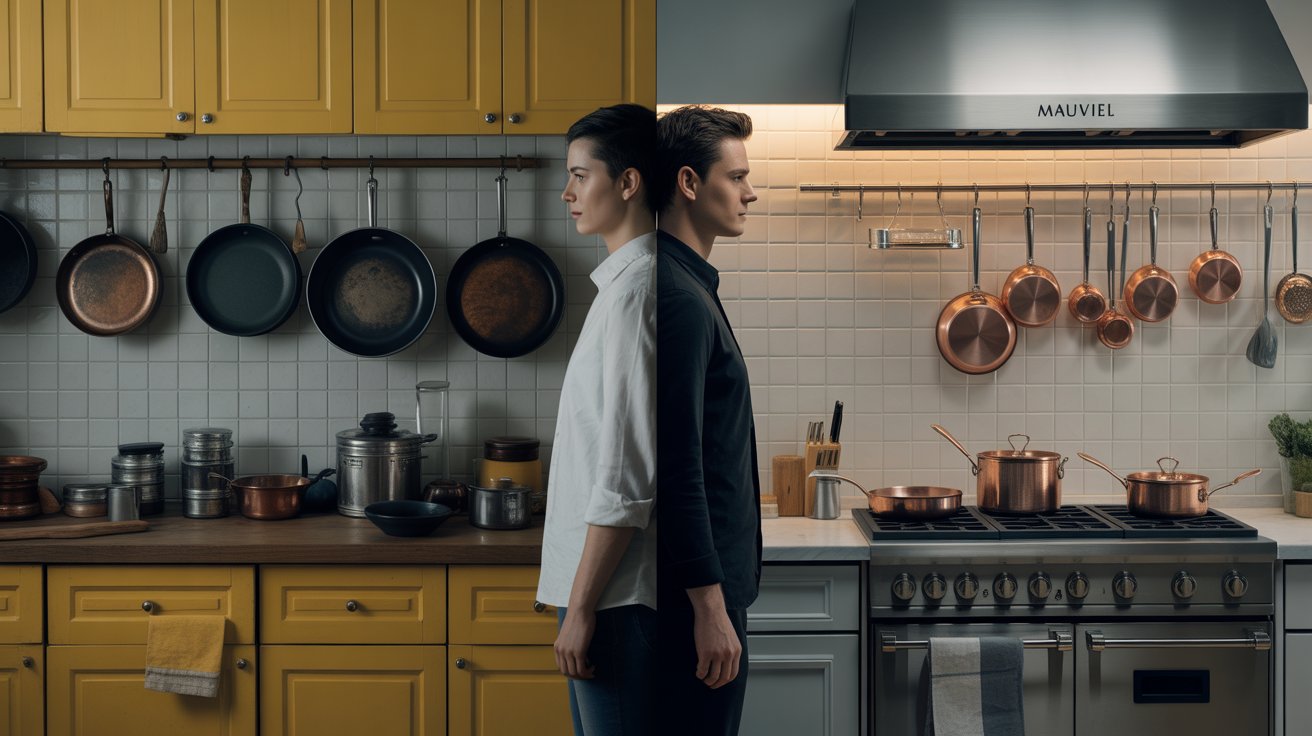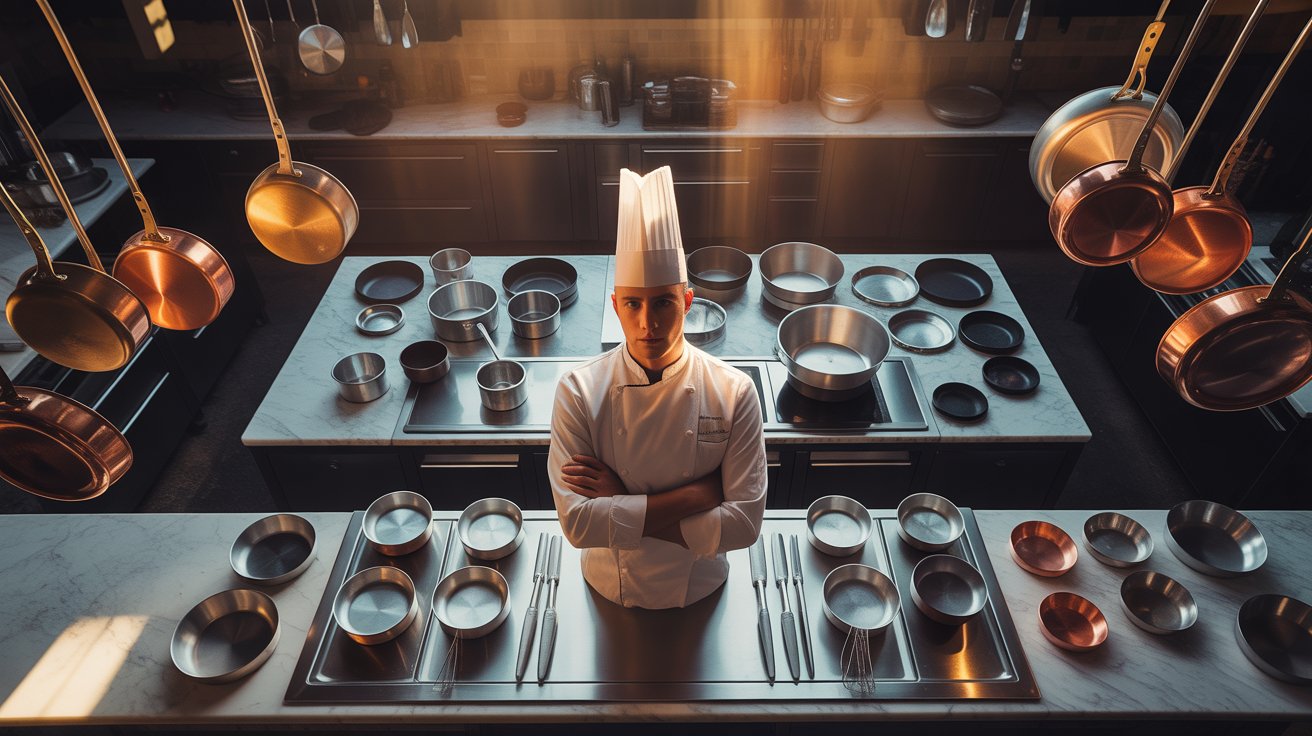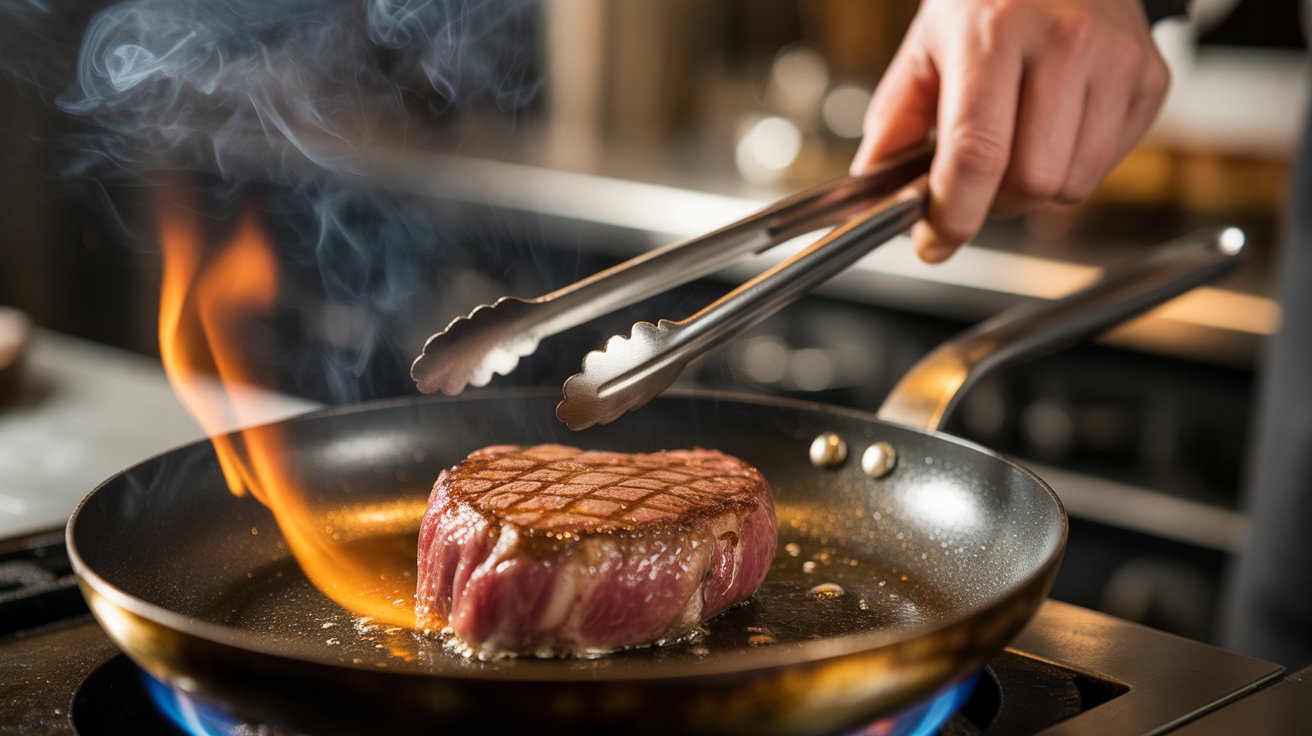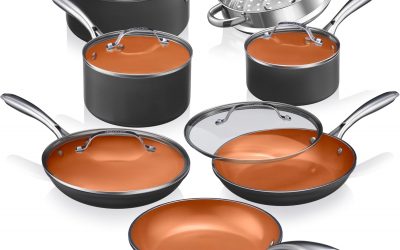The Cookware Code: What Professional Chefs Really Use (and Why It Outperforms Your Home Set)
Step inside the pro kitchen: the gear chefs trust, the science behind it, and how to build your own chef-grade arsenal at home.
Why Chef-Grade Cookware Outperforms Everyday Sets

The Science of Heat Retention and Precision Control
Professional pans are built for control. Multi-layer (tri-ply or five-ply) bodies with copper or aluminum cores deliver even heat and fast recovery when cold ingredients hit the surface. No cold spots. No guesswork. The pan behaves like an instrument—responsive, predictable, and tuned for flavor.
Durability Metrics: Cladding, Core Metals, and Craftsmanship
Chef-grade cookware is forged to survive daily service. True cladding (not a thin base disk) keeps pans flat and efficient across gas, electric, and induction. Riveted handles, thicker gauges, and corrosion-resistant stainless mean years—often decades—of consistent performance.
Cost-Per-Use Economics—Why Pros Invest, Not Spend
A $300 skillet used thousands of times costs pennies per cook. Cheap pans replaced yearly are false economy. Pros invest where it matters most: speed, control, flavor, and longevity.
The Essential Cookware Types Used by Michelin-Star Chefs

Stainless Steel Tri-Ply and Copper Hybrids
Stainless steel provides stability and durability; copper or aluminum cores supply speed and evenness. Tri-ply and copper core hybrids are the backbone of pro kitchens because they follow the chef’s lead—rise, hold, and drop in temperature on command.
Carbon Steel vs. Cast Iron: Power and Personality
Carbon steel heats fast and responds instantly—ideal for high-tempo sautés. Cast iron holds heat like a vault—perfect for searing, braising, and oven roasting. Most chefs keep both: carbon steel for rhythm, cast iron for depth.
Nonstick Tech That Actually Meets Pro Standards
Modern pro-grade PTFE and ceramic coatings are tougher than their predecessors. Chefs still deploy nonstick surgically—for eggs, delicate fish, and sticky reductions—while relying on steel for most serious work.
Brand Breakdown: Chef-Endorsed Cookware That Delivers Results

Pros: Elite heat distribution, rock-solid build, balanced ergonomics; Cons: Heavier, premium price.
Pros: Best-in-class conductivity, artisan aesthetics; Cons: Requires polishing, higher maintenance.
Pros: Cutting-edge alloys, superb induction performance, seamless design; Cons: Premium pricing.
Pros: Chef-tested performance, strong value; Cons: Limited heritage cachet.
Best Value Alternatives for Serious Home Cooks
- Tramontina Tri-Ply Clad — excellent tri-ply value.
- Cuisinart Multiclad Pro — budget-friendly stainless workhorse.
- HexClad Hybrid — hybrid surface with easy release.
How to Build a Professional-Grade Cookware Arsenal at Home
Starter 3-Piece vs. 5-Piece Investment Kits
Start with three essentials:
- 10″ tri-ply stainless sauté pan — All-Clad D3 10″ sauté
- 3-quart saucepan with lid — Demeyere 3-Qt Saucepan
- 12″ carbon steel skillet — De Buyer Mineral B 12″
Expand to five pieces:
- 8-quart stockpot — Tramontina 8-Qt Tri-Ply
- 10″ nonstick fry pan — GreenPan Pro 10″
Upgrading with Purpose—Buying in Stages
Replace weakest links first. Each upgrade should fix a problem—heat retention, responsiveness, capacity, or cleanup. Skill compounds when your tools keep up.
Maintenance and Lifespan Optimization Tips
- Hand-wash stainless and copper; dry immediately.
- Reseason carbon steel and cast iron regularly.
- Polish copper to maintain conductivity (and shine).
- Store vertically or with pan protectors to prevent base distortion.
 Final Verdict: Which Cookware Line Dominates the Professional Kitchen
Final Verdict: Which Cookware Line Dominates the Professional Kitchen
All-Clad D3 and Demeyere Atlantis remain the most balanced choices for control, durability, and versatility. Mauviel leads for copper purists and presentation. Made In delivers modern value for ambitious home cooks.
FAQs
What cookware do professional chefs actually reach for?
Mostly tri-ply stainless with aluminum or copper cores, plus carbon steel and cast iron for specific tasks. Nonstick is used sparingly for delicate foods.
Is professional cookware worth the investment for home cooks?
Yes. Better heat control and longevity improve results immediately and save money over time. It’s the fastest upgrade to your cooking.
Which brands are trusted in pro kitchens?
All-Clad and Demeyere for stainless performance, Mauviel for copper, and emerging options like Made In for strong value.
How should I start building a set?
Begin with a tri-ply sauté, a 3-qt saucepan, and a 12″ carbon steel skillet. Add a stockpot and a single quality nonstick as your fourth and fifth pieces.
Products / Tools / Resources
- All-Clad D3 Stainless Sets — lifetime-grade stainless workhorse.
- Demeyere Atlantis Collection — elite heat control and induction power.
- Mauviel M’Heritage Copper — for copper purists and presentation.
- De Buyer Mineral B (Carbon Steel) — responsive, naturally nonstick with seasoning.
- Matfer Bourgeat Carbon Steel — pro favorite for high-heat searing.
- Tramontina Tri-Ply Stockpot (8-Qt) — versatile and budget-savvy.
- GreenPan Pro Nonstick 10″ — reliable nonstick for eggs and fish.
Prefer deep dives? Explore our Brand Hubs and the Pro Cookware Buying Guide for detailed comparisons, thermal maps, and care methods.




0 Comments